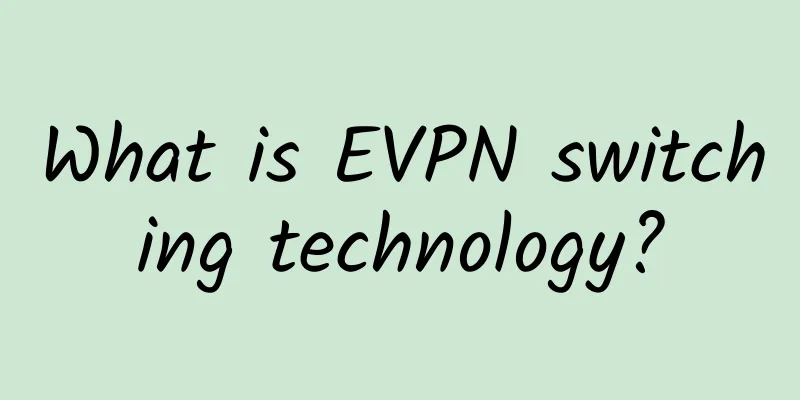Will 5G really kill Wi-Fi? NR-U is here

|
5G is like an elephant running wildly in the wireless jungle, and Wi-Fi may be crushed. Wi-Fi cannot meet the new business needs of the 5G era. 5G private networks will first enter indoor areas and replace enterprise-level Wi-Fi. Wi-Fi is irreplaceable, but it cannot avoid the fate of being "integrated" by 5G. It may be a "slice" of the 5G network. It is simply wishful thinking that 5G will replace Wi-Fi unless the price of pico base stations for cellular networks drops significantly. Think about LTE-U and LAA in the 4G era. They were a big deal but ended up in failure. Haha! … Will 5G kill Wi-Fi? This topic once caused heated debate in the industry. After a period of calm, the debate between 5G and Wi-Fi has once again become a hot topic. This time, the storm was even more severe. A few days ago, at the 3GPP plenary meeting held in Italy, 3GPP made a big decision - launching the 5G NR unlicensed spectrum (NR-U) project in Release 16. What? What is 5G NR-U? Simply put, it is 5G that works in the Wi-Fi frequency band. This means that 5G networks can be deployed like Wi-Fi in the future, and 5G will compete directly with Wi-Fi. The day has finally come. Once again, concerns have been raised in the Wi-Fi industry. 1. What is 5G NR-U? 5G NR-U, the full name of which is 5G NR in Unlicensed Spectrum, refers to 5G NR that works in unlicensed spectrum. It includes two modes:
1. LAA NR-U LAA NR-U, the full name of Licensed assisted access NR-U, is to extend the LTE-U/LAA technology of the 4G era to 5G NR. This has to start with the LTE-U and LAA technologies of the 4G era... (1) LTE-U In the 4G era, 3GPP R12 officially defined LTE-U. LTE-U, the full name of which is LTE-Unlicensed, means that operators apply LTE technology to unlicensed spectrum (such as the 5GHz band used by Wi-Fi) to enhance the capacity and performance of operator networks by utilizing unlicensed spectrum resources, especially for indoor places with large crowds, such as stadiums and shopping malls. LTE-U is actually a carrier aggregation technology that uses the LTE licensed frequency band as an anchor point and defines it as Pcell (Primary Serving Cell). Pcell transmits control signaling and high QoS data, while the unlicensed frequency band is defined as Scell (Secondary Serving Cell), which only transmits data. The two are aggregated to greatly improve the downlink rate. (2) LAA LAA was defined in 3GPP R13 and enhanced in R14. LAA technology is designed to better manage LTE-U, such as supporting LBT (listen before talk), reducing interference with adjacent Wi-Fi bands, and supporting uplink and downlink bidirectional link aggregation. LTE-U and LAA In short, LTE-U and LAA are born for operators. With them, operators can make full use of Wi-Fi unlicensed spectrum to increase network capacity without making major changes to the network. However, from the perspective of the Wi-Fi industry, it feels like its territory is under attack. Google once published a white paper, arguing that LTE-U is not a good neighbor of Wi-Fi, and reminded regulators to be wary of "LTE-U and LAA are deliberately excluding true unlicensed spectrum technologies." LAA NR-U in the 5G era is estimated to be similar to LTE-U/LAA in the 4G era, and aims to improve the 5G network rate by aggregating unlicensed spectrum. However, considering that LTE-U/LAA was a relative failure in the 4G era and has not been widely used so far, and 5G defines a richer spectrum range, it remains to be seen whether LAA NR-U can succeed in the 5G era. The highlight may be Stand-alone NR-U. 2. Stand-alone NR-U Stand-alone NR-U, that is, independent NR-U, no longer needs the licensed spectrum as an anchor point, it runs completely independently on the unlicensed spectrum, which means that anyone can deploy their own 5G network like Wi-Fi. You can use it to deploy a single access point or deploy your own 5G private network. Stand-alone NR-U will share unlicensed spectrum bands fairly and completely openly like Wi-Fi, except that it uses 5G NR technology instead of 802.11ac/ax technology. With Stand-alone NR-U, cellular networks will be able to expand to unlicensed spectrum without restrictions. This is a big game for the future of 5G. Because 5G is not just 5G for mobile operators. Power grids need 5G, smart factories need 5G, cable TV service providers need 5G, and Internet giants also need 5G. All industries need 5G to enable digital transformation and improve service experience. With Stand-alone NR-U, industries that do not have licensed spectrum resources can build their own 5G private networks through Wi-Fi unlicensed spectrum and replace Wi-Fi networks. 2. Will 5G replace enterprise-level Wi-Fi first? Not long ago, a report from MIT Technology Review stated that German automakers are "fed up with crappy Wi-Fi" and are planning to build their own 5G private networks at their production bases to replace existing Wi-Fi and Ethernet connections. Why? 5G ultra-low latency and ultra-high reliability (URLLC) connections free industrial robots from the constraints of wired connections, allowing them to move freely, assemble freely, and switch production lines freely, reducing production costs and quickly adapting to changes. 5G large bandwidth capability (eMBB) enables high-definition video to monitor production line quality in real time, and the introduction of wearable industrial equipment + AR technology will revolutionize the human-computer interaction mode in industrial control. 5G network slicing technology can meet the diversified services of future smart factories. 5G edge computing can not only protect the security and privacy of local factory data, but also help factories achieve software upgrades and improve factory flexibility and scalability. Currently, the Wi-Fi, Ethernet, and even 4G networks used in factories are unable to cope with the situation, and they must rely on 5G. In addition to automobile giants such as Audi, BMW, Daimler and Volkswagen, large chemical, natural gas, oil companies and other industries are also interested in building their own 5G private networks. It is reported that the German telecommunications regulator is preparing to reserve a portion of spectrum resources specifically for the manufacturing industry. Once the spectrum resources are obtained, these companies will build their own 5G private networks to enter the era of Industry 4.0. For 5G vertical field applications, you can use 5G NR under licensed spectrum or 5G NR-U under unlicensed spectrum. For some scenarios with high reliability requirements, people are concerned that NR-U may face the same interference risk as Wi-Fi because it operates in a shared unlicensed frequency band. However, some latest studies have shown that 5G NR-U can also achieve a high reliability of six nines. The 5G private network includes 5G base stations, 5G cloud core network and edge computing. All equipment in the factory is connected to the 5G base station via 5G wireless and then to the core network, thereby achieving end-to-end authentication, sessions, management, QoS control and mobility. Unlike Wi-Fi's "best effort" attitude, 5G private networks have end-to-end quality assurance and can provide diversified services through network slicing technology. Therefore, with the launch of 5G NR-U, when spectrum authorization is no longer a threshold, more companies may deploy their own 5G private networks in the era of the Internet of Everything, gradually replacing Wi-Fi. Even some public places used to deploy Wi-Fi on their own and were unwilling to cooperate with operators, but this situation may gradually disappear. This is because various applications such as VR/AR, interactive games, etc. in the future will need to have a highly immersive experience, which requires consistent end-to-end low latency and large bandwidth guarantees of 5G networks. The "best effort" attitude of traditional Wi-Fi cannot meet this requirement. 3. WiFi won’t disappear, but it definitely lost this time? The Wi-Fi industry is certainly not convinced by the claim that Wi-Fi will be replaced by 5G. More than 9 billion Wi-Fi devices have been deployed, carrying most of the world's data traffic, and their contributions are endless. The new generation Wi-Fi 6 will provide higher throughput, lower latency, and better network management and optimization, supporting applications such as VR/AR, high-definition video, and enterprise IoT in the future 5G era. To upgrade to Wi-Fi 6, you only need to upgrade or expand the current Wi-Fi network, without having to invest huge amounts of money in building the network like 5G. This can share the pressure of expensive 5G network deployment on operators. Whether in terms of scalability, economy, or ease of deployment, people in the Wi-Fi industry believe that Wi-Fi is irreplaceable. Unless the price of 5G pico base stations drops to the same cheap as Wi-Fi routers. But technologically speaking, Wi-Fi does lag behind when compared to evolving cellular networks, especially 5G. Apart from the immediacy of coverage and connectivity, Wi-Fi does not have an end-to-end deployment plan, whereas 5G is a complete end-to-end framework that will integrate various wireless access technologies, including Wi-Fi. Therefore, some people believe that the fate of Wi-Fi may be integrated into the 5G network and become a "slice" of 5G used in some scenarios. It's better to say it this way. Don't keep talking about who will destroy whom. It's too hurtful. Wouldn't it be better for everyone to merge together and create a beautiful wireless world in the future? The battle between 5G and Wi-Fi is not a life-and-death battle, but a friendly match. It doesn’t matter who wins or loses. When the final whistle blows, everyone can still hug each other and exchange jerseys. However, the TV broadcast always shows the bright side. Behind this friendly match, the struggle over technology, ecology and interests has long been undercurrent, and the spectators are just watching the developments. |
<<: MiWi protocol, a network protocol suitable for small IoT
>>: Architecture upgrades to prepare for 5G: 2018 network review
Recommend
Weekend news! Under the US ban, Huawei has won over another major European country and become a core 5G supplier!
Because of 5G technology, the United States has s...
CloudCone promotional annual payment of $9.99 VPS restock, Los Angeles MC data center
CloudCone has added more inventory to the Hashtag...
UAE operator e partners with Nokia Bell Labs to explore industrial AI applications
UAE-based telecom service provider e&T and No...
Let government affairs walk in the "cloud" - Huawei's practice of government affairs cloud
2017 is destined to be an extraordinary year for ...
Bharti Airtel, Ericsson trial 5G network in rural India
Indian telecom operator Bharti Airtel and Ericsso...
The story of spectrum: Gigabit is just the beginning
At the end of 4G development, the most advanced m...
Clouvider: £3.15/month - 2GB/50GB/5TB@10Gbps/8 data centers available
Clouvider is a foreign hosting company founded in...
Interview surprise: Why use HTTPS? What is it useful for?
Speaking of HTTPS, I believe most people are fami...
5G development strategies and measures of major countries and regions and their implications for my country
[[394646]] At present, a new round of scientific ...
Is Your Ethernet Cable Faulty? Signs to Watch Out For
Cables are an unwanted but necessary thing, and ...
How will the emergence of 5G affect AI federated learning?
As development teams scramble to build AI tools, ...
Microsoft announces that US operator AT&T's 5G mobile network business will be migrated to Azure cloud service
Microsoft announced today that US telecom operato...
Serverless Engineering Practice | Tips for Optimizing and Debugging Serverless Applications
Tips for debugging serverless applications During...
China Unicom makes first HD call on 5G SA network
2019 is the first year of 5G commercial deploymen...
Edge computing in 5G
01/ Introduction Edge computing is a computing pa...









